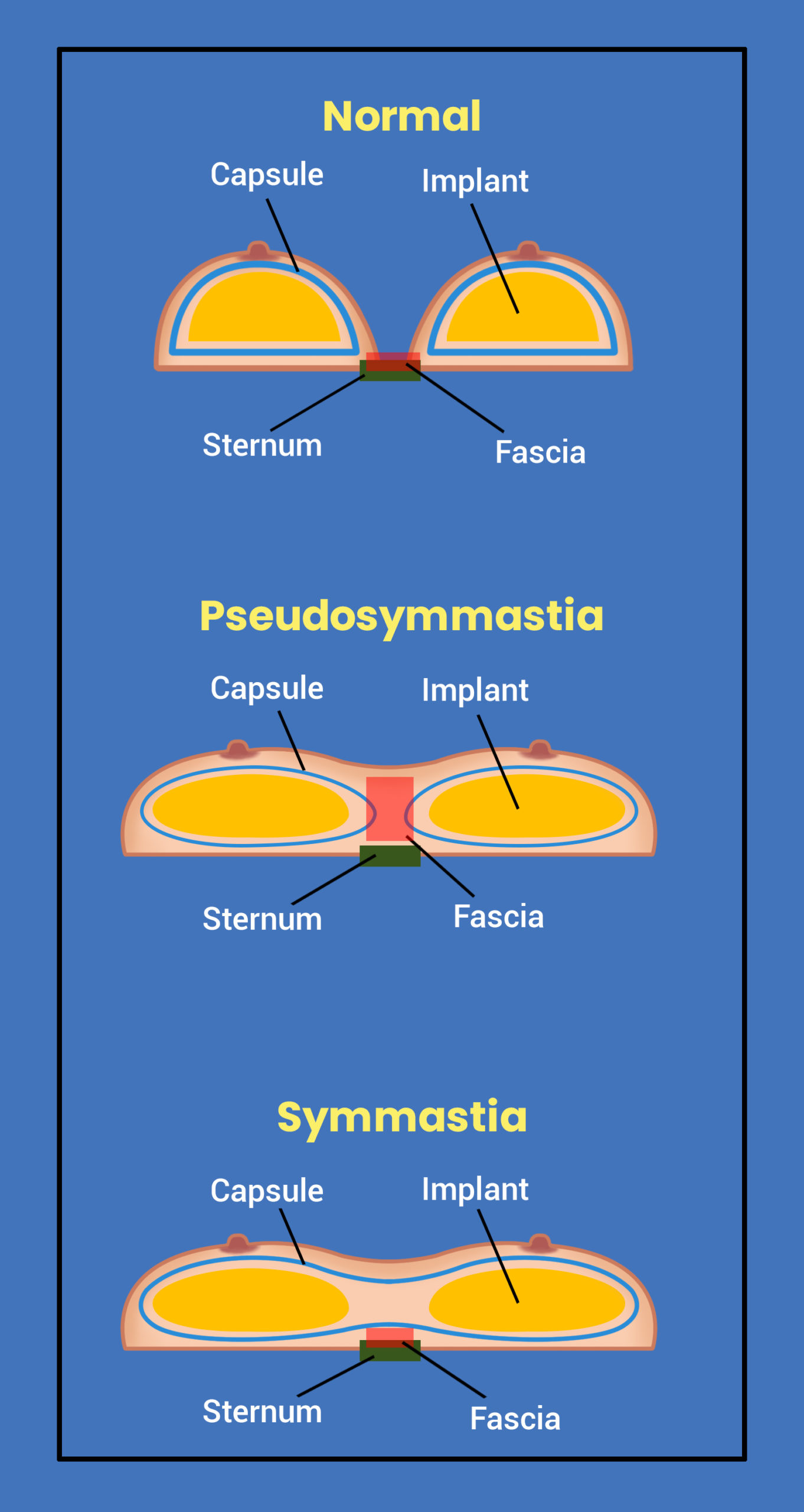Pseudo-Symmastia and Breast Augmentations
Pseudo-symmastia and symmastia are two potential complications after breast augmentation top surgery, formerly MTF top surgery or MTF breast augmentation. In this article, we describe what these two conditions are and when they can happen. We also talk about how we can lessen these risks while achieving optimal breast augmentation top surgery results. Continue reading to find out more about pseudo-symmastia. If you want to learn more about other potential risks and complications of breast augmentation top surgery, click here.
What is symmastia?
Symmastia is defined as a joining of the breasts in the middle of the chest. This means that there is minimal or no visible cleavage or flatness in the center of the chest between the breasts. In the context of plastic surgery, symmastia is usually considered to be a problem of some sort which occurred during surgical dissection (creation of the space where the implant will live). The risk of this circumstance can be reduced by choosing a board-certified plastic surgeon to perform gender affirming breast augmentation.


The left image shows flatness, or a cleft, between the breasts. The right image shows breasts without any separation, otherwise known as symmastia. Individuals with symmastia have no visible cleavage or flatness in the center of the chest between the breasts.
Pseudo-Symmastia
Another possible complication of a breast augmentation is pseudo-symmastia. Pseudo-symmastia happens when the implants are placed correctly but are so big that they stretch the skin in the middle of the chest and the implants pull that skin outward and away from the chest (sternum in this region). Similar to symmastia, patients who experience pseudo-symmastia also see less of a flat cleavage area between the breasts. This phenomenon is called pseudo-symmastia because it’s related to skin stretching between the breasts rather than implant placement.

Above image shows a top view cross section of breasts without symmastia (top image) and breasts with symmastia (bottom image). Without symmastia, there is space between the breasts creating a cleft and a level of flatness between the breasts. The bottom image shows true symmastia where the capsules are joined, leaving no cleft between the breasts. Individuals experiencing pseudo-symmastia, however, present joined breasts. This is a result of the skin pulling too tightly and being unable to lay flat on the chest in the space between the breasts. The fascia which normally keeps the skin connected to the sternum has been disconnected. With pseudo-symmastia, the capsules are not joined but the addition of the implants pulls the skin away from the chest.
Limits on Breast Implant Size
When considering the implant size appropriate for each patient, the surgeon must weigh the possibility of symmastia and pseudo-symmastia. Because of the risk of pseudo-symmastia, it’s not always possible for patients to get their ideal outcome, especially if they have a very tight and flat chest before surgery. This means that on occasion, patients may have to have smaller implants in order to avoid the risk of symmastia and pseudo-symmastia.
For some patients who experience pseudo-symmastia, there is the chance that a second augmentation can be performed after the skin in the chest area has relaxed and healed after surgery. However, because this is not always a possibility for all patients, your surgeon will make recommendations about implant size based on how flat and tight your chest is before surgery.
Request a Free Surgical Consultation Today.
All virtual and in-person consultations with our board-certified surgeons are free. Once you fill out this form, our patient care team will reach out and guide you through every step to get to surgery.




